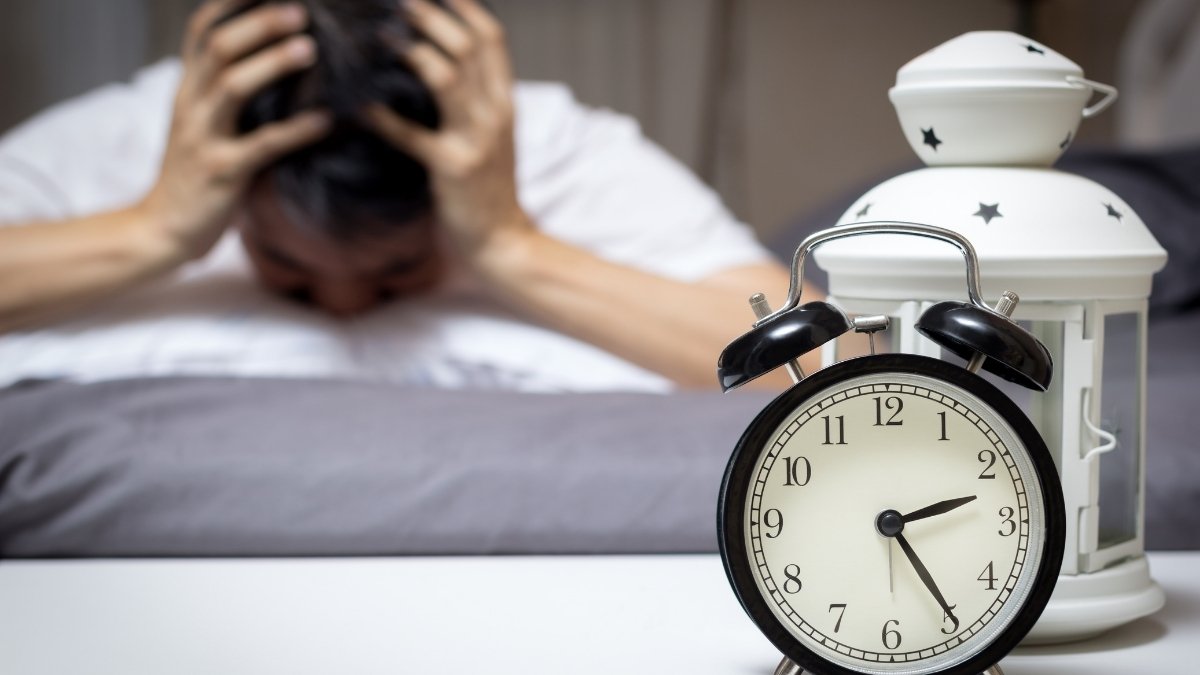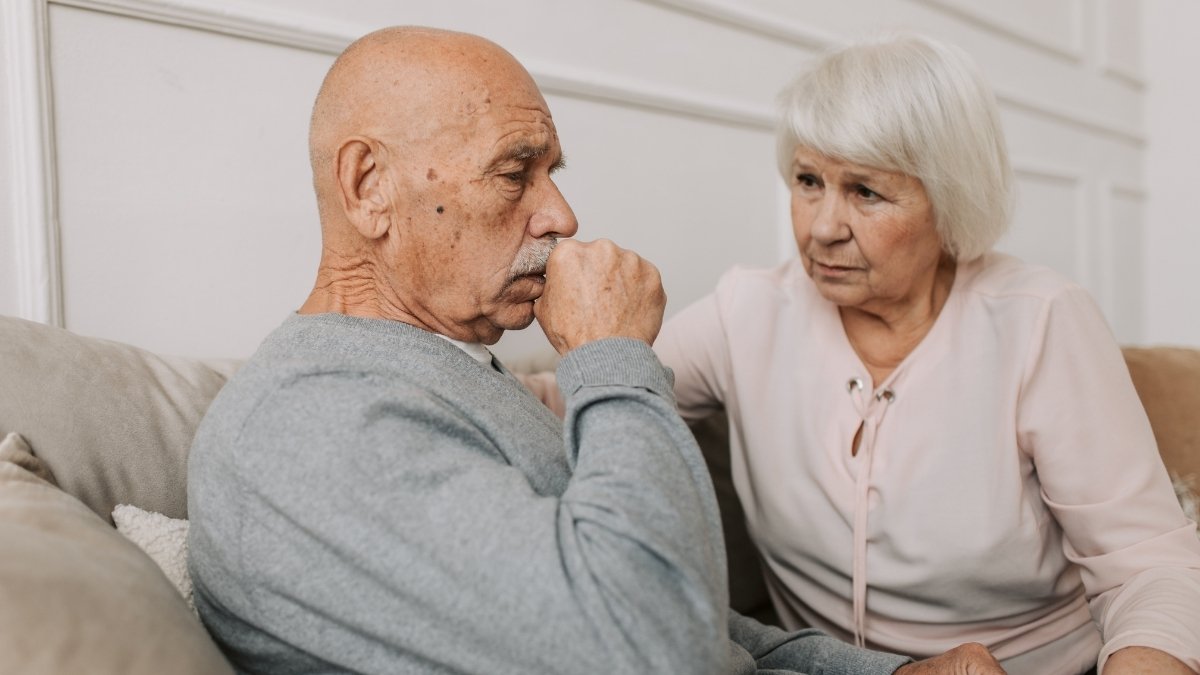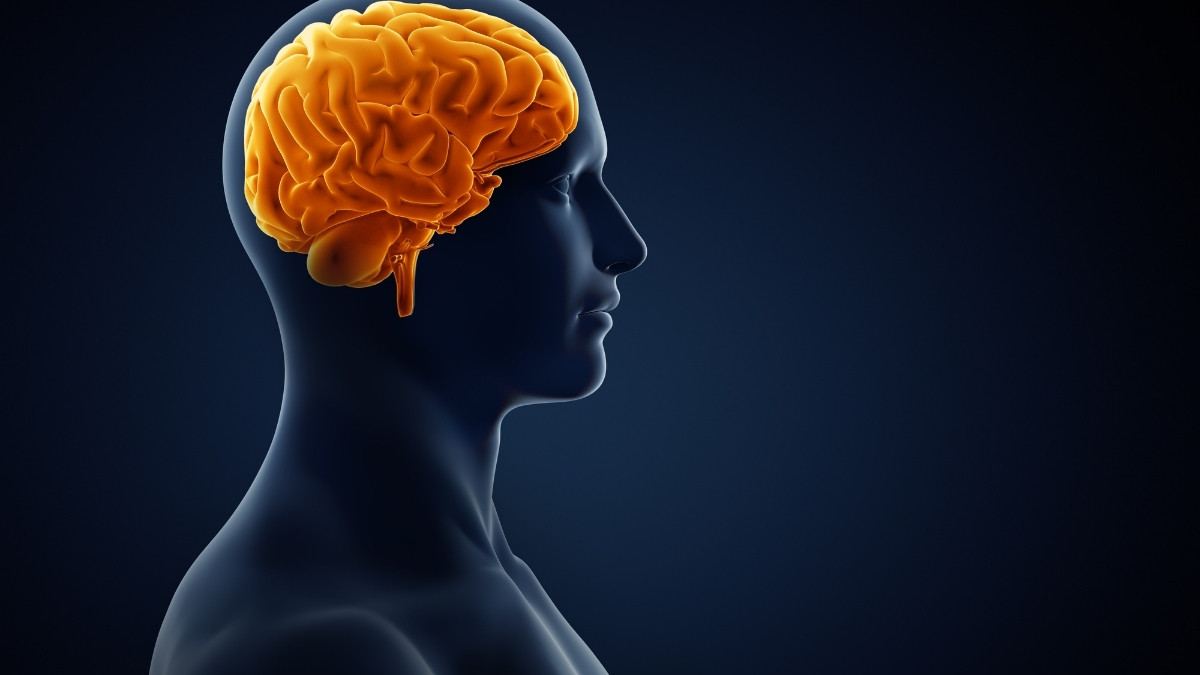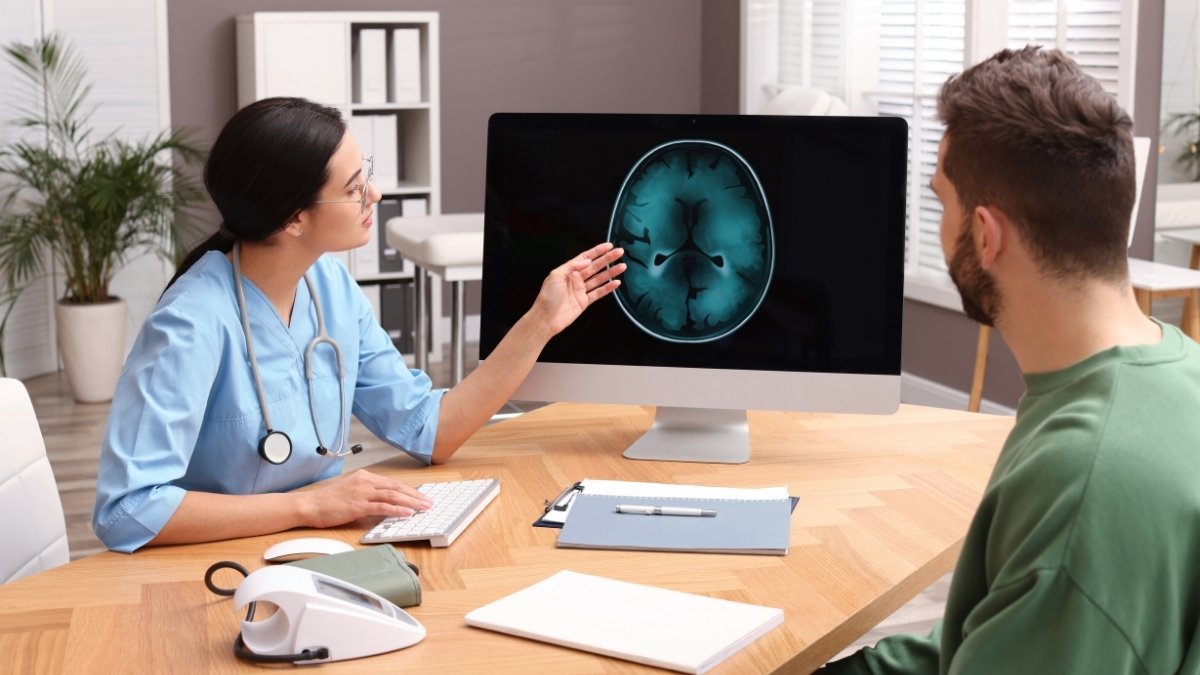A Neurologist’s Urgent Warning: This ‘Normal’ Signs of Aging Is an Early Red Flag for Parkinson’s in Americans

When 68-year-old Tom started punching and kicking in his sleep, his wife assumed it was just another quirk of getting older. She’d wake up with bruises on her arms. He’d apologize, confused about what happened. Two years later, he was diagnosed with Parkinson’s disease—but neurologists say the warning signs were there all along.
Research shows that certain symptoms often dismissed as normal aging—like acting out dreams—can actually signal Parkinson’s disease years or even decades before the tremors start. Most people ignore these early warning signs of Parkinson’s disease because they seem harmless. A little constipation. Trouble smelling. Violent dreams. You blame age and move on.
But here’s what doctors wish you knew: 90,000 Americans get diagnosed with Parkinson’s every year. That’s a 50% increase from previous estimates. The disease is spreading faster than anyone expected. And it starts long before your hands shake.

In this article, you’ll learn the #1 “aging symptom” that’s actually a red flag for Parkinson’s. You’ll discover specific warning signs that appear 4-10 years before diagnosis.
Most importantly, you’ll know exactly what to do if you recognize these symptoms in yourself or someone you love. Acting out dreams and other early signs like REM sleep behavior disorder aren’t just sleep problems—they’re your brain sending an SOS before motor symptoms ever appear.
🧠 Parkinson’s Disease: Early Warning Signs
Don’t Wait for the Tremors
6 Warning Signs You Shouldn’t Ignore
REM Sleep Behavior Disorder
Acting out violent dreams
Loss of Smell
Can’t smell bananas or coffee
Chronic Constipation
Daily digestive struggles
Micrographia
Shrinking handwriting
Soft Voice
People ask you to speak up
Facial Masking
Looking angry when you’re not
⏰ The Disease Timeline
The Alarming Rise of Parkinson’s in America
If you think Parkinson’s is rare, the statistics will shock you. Nearly 1 million Americans live with Parkinson’s disease right now. That’s 1 out of every 336 people. Look around your neighborhood. Someone you know probably has it.
A new American gets diagnosed every six minutes. That’s 90,000 people each year hearing the words “You have Parkinson’s.” This number jumped 50% from what doctors expected. The incidence rates keep climbing, and experts can’t fully explain why.

By 2030—just five years away—1.2 million Americans will have this disease. Think about that. In the time it takes your kids to finish high school, 200,000 more people will get sick. The cost hits $61.5 billion per year when you count medical bills, lost work, and caregiving.
Your location matters. People in the Rust Belt, Southern California, parts of Texas, Central Pennsylvania, and Florida get Parkinson’s more often. Scientists think old industrial chemicals might be part of the reason.
If you’re a man, your risk is 1.5 times higher than women. Age is the biggest risk factor. Most diagnoses happen after 65.

But here’s the scary part: The disease starts years before your doctor can diagnose it. Sometimes a whole decade before. And most people ignore the early warning signs because they seem normal.
The ‘Normal Aging’ Sign That’s Actually a Red Flag: REM Sleep Behavior Disorder
Karen’s husband punched her in his sleep. Twice. He said he was fighting off attackers in his dreams. Their doctor said it was just stress. Three years later, he had Parkinson’s disease.
This is REM sleep behavior disorder. And it’s the biggest warning sign most people miss. When you dream, your brain normally paralyzes your muscles. You can’t move. That’s why you don’t act out dreams. But RBD breaks that system. Your muscles work during dreams. You punch. Kick. Yell. Sometimes you leap out of bed.

Here’s the statistic that should scare you: 97% of people with isolated RBD will develop Parkinson’s disease, Lewy body dementia, or a related brain disease within 14 years. That’s nearly everyone. This isn’t a maybe. It’s a when.
RBD shows up years before the shaking starts. Sometimes decades before. About 2% of people over 50 have it. That’s 1 in 50 older adults acting out dreams and not knowing what it means.
The dreams have patterns. You’re being chased. Attacked. Fighting back. Your partner wakes up with bruises. Actor Alan Alda went public with his RBD story after his Parkinson’s diagnosis. He wanted people to know the connection.

30% of RBD patients sleep in separate beds because of the violence. One study found 33% already had brain disease within five years. Your brain’s warning system is going off. Most people just buy separate mattresses and ignore it.
If you’re punching in your sleep, this isn’t normal aging. Get a sleep study. See a movement disorder specialist. Don’t wait for the tremors.
Other Early Warning Signs Often Dismissed as ‘Just Aging’
RBD isn’t the only red flag hiding in plain sight. Your body sends other signals years before tremors start. Most people blame getting older. But these early Parkinson’s symptoms deserve attention.
You Can’t Smell Anymore
When was the last time you smelled a banana? Really smelled it? More than 95% of Parkinson’s patients lose their sense of smell before any shaking begins. This can happen 10 years before diagnosis. Sometimes even decades before.

People with reduced smell have a 3.84 times higher risk of developing Parkinson’s over their lifetime. That’s huge. Try smelling bananas, dill pickles, or licorice. Can’t smell them? That’s a problem. Loss of smell Parkinson’s connection is one of the strongest early warnings doctors know about.
You’re Constipated Every Day
Straining to poop isn’t just uncomfortable. It’s an early sign. Parkinson’s attacks your autonomic nervous system first. That’s the system that runs your gut.

Before tremors show up, your digestion slows down. Some people deal with this for years before getting diagnosed.
Your Handwriting Shrinks
Look at your signature from five years ago. Now write it again. Is it smaller? Do the letters crowd together? Doctors call this micrographia.

Your hand muscles stiffen before you notice. The change is gradual but clear when you compare old writing to new.
People Ask You to Speak Up
Your voice gets soft and breathy. People lean in to hear you. They turn up the TV. You think they’re losing their hearing.

Really, you’re speaking more quietly than before. Your vocal cords stiffen. It’s one of those non-motor symptoms that sneaks up slowly.
Your Face Looks Angry (But You’re Not)
People ask if you’re mad. You’re not. Your face just stopped moving as much. Doctors call it facial masking. Your facial muscles get stiff.

You look serious or depressed even when you feel fine. Family members notice this before you do.
Why These Symptoms Appear Years Before Traditional Diagnosis
Here’s what your doctor probably didn’t tell you: Parkinson’s starts in the wrong part of your brain. That’s why you get weird symptoms first and tremors last.
The disease begins in your brainstem—the part that controls sleep, smell, and digestion. Years later, it moves to the area that controls movement. By the time your hands shake, the damage has been happening for a decade or more. These pre-clinical signs show up when most doctors still can’t diagnose you.

Think of it like termites in a house. You don’t see the damage until the walls crack. But the termites have been eating away for years. Parkinson’s works the same way.
Your brain makes a chemical called dopamine. It helps you move smoothly. Parkinson’s kills the nerve cells in an area called the substantia nigra. That’s where dopamine comes from. But you don’t get tremors until you’ve lost 60-80% of these cells. The first 60% dies silently while you’re losing smell and acting out dreams.
A protein called alpha-synuclein clumps up in your brain. It shows up in your smell center first. That’s why loss of smell happens so early. Doctors call this early stage “prodromal Parkinson’s”—the before-tremors phase.

The problem? Until you shake or move slowly, most doctors can’t officially diagnose you. The early signs get blamed on aging. You ignore them. Your doctor ignores them. Meanwhile, dopamine loss continues.
This is both bad news and good news. Bad because diagnosis comes late. Good because you have a window to catch it early if you know what to look for.
What You Should Do If You Experience These Warning Signs
Don’t freak out. But don’t ignore this either. One symptom doesn’t mean you have Parkinson’s. Two or three symptoms together? That’s when you need to act.
See the Right Doctor (Not Just Any Doctor)
Your regular doctor might miss this. Only 9% of people see a movement disorder specialist, but that’s exactly who you need. Half of patients only see regular neurologists who might not catch early signs. For RBD specifically, book appointments with both a sleep specialist and a movement disorder neurologist.

Tell them exactly what’s happening. “I punch in my sleep.” “I can’t smell coffee anymore.” “My handwriting is half the size it used to be.” Be specific. Bring examples if you can.
Get the Right Tests
For sleep problems, you’ll need an overnight sleep study. They’ll attach sensors to watch your brain waves and muscle activity while you dream. This confirms RBD. It’s not a guess anymore. It’s data.

For smell loss, ask about the University of Pennsylvania Smell Identification Test. It’s a scratch-and-sniff test that measures exactly how much smell you’ve lost. Simple but accurate.
A full neurological exam checks your movement, reflexes, and coordination. Early diagnosis Parkinson’s depends on catching subtle changes before they become obvious.
Make Your Bedroom Safe Tonight
While waiting for appointments, protect yourself. If you’re acting out dreams, you could get hurt. Remove sharp objects from your nightstand. Pad the corners of furniture near your bed. Some people add bed rails. Others put the mattress on the floor.

Try melatonin first. It’s over-the-counter and it’s the number one treatment for RBD. It suppresses dream enactment in many people. Start with 3-6mg before bed. If that doesn’t work, your doctor can prescribe clonazepam.
Consider Joining Research

The Michael J. Fox Foundation runs studies tracking people with RBD. They follow you over time to understand how the disease progresses.
You get expert monitoring. Science gets better data. It’s a win for everyone.
Lastly,

Here’s what you need to remember: 97% of people with REM sleep behavior disorder develop Parkinson’s or a related brain disease within 14 years. That’s not a maybe. That’s almost everyone. Acting out dreams isn’t a sleep problem. It’s a warning.
Loss of smell isn’t just age. Daily constipation isn’t just diet. Shrinking handwriting isn’t just tired hands. These symptoms show up years before tremors. Sometimes a whole decade before. Right now, 90,000 Americans get diagnosed every year. One person every six minutes hears “You have Parkinson’s.” Most of them ignored the early signs.

Early detection changes everything. Better treatments. More options. Years of quality life you wouldn’t have otherwise. But only if you act now.
Don’t dismiss these changes as “just getting older.” If you’re punching in your sleep, can’t smell coffee anymore, or have multiple symptoms from this list, make an appointment with a movement disorder specialist this week. Not next month. This week.
Knowing the early warning signs of Parkinson’s disease could add years to your active life. Your body is already talking. The question is: are you listening? Don’t wait for the tremors to force you into action. By then, you’ve lost a decade you could have spent fighting back.






